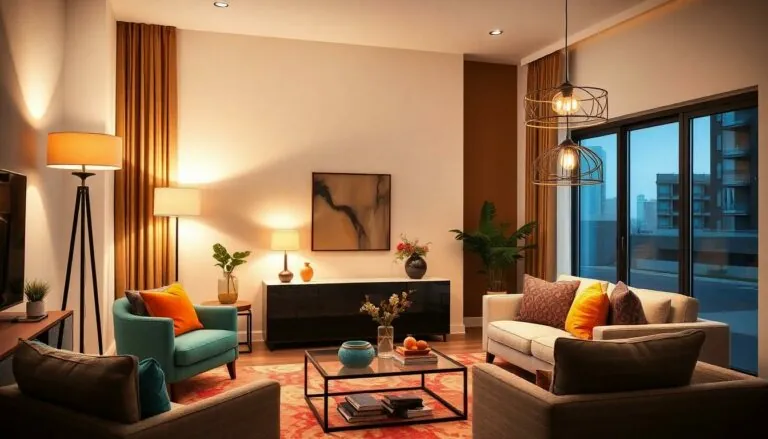Transforming a dementia care home into a vibrant and welcoming environment doesn’t just brighten the space—it can significantly enhance the quality of life for residents. Imagine walking into a room that feels less like a hospital and more like a cozy living room filled with laughter and warmth. With the right decorating ideas, caregivers can create a stimulating atmosphere that sparks joy and encourages social interaction.
From whimsical wall art that tells a story to color schemes that evoke fond memories, every detail counts. These decorating choices can help residents feel more at home, making their days a little brighter. So let’s dive into some creative and practical decorating ideas that blend functionality with flair, ensuring that everyone—from residents to visitors—feels right at home in this unique setting. After all, who says a care home can’t have a little personality?
Table of Contents
ToggleImportance Of Decorating For Dementia Care Homes
Decorating dementia care homes significantly affects residents’ well-being. A thoughtfully designed environment offers comfort and familiarity, fostering a sense of security. Warm colors and familiar patterns create inviting spaces that residents can relate to, making transitions from personal spaces smoother.
Visual cues play a crucial role in helping residents navigate their surroundings. Clear signage and easily recognizable images assist in reducing confusion. Simple layouts promote independence, allowing residents to feel in control of their environment. Residents often thrive in spaces that reflect their history and interests, enhancing their engagement and interaction.
Social interaction significantly improves in well-decorated areas. Cozy common spaces that encourage gatherings help reduce feelings of isolation. Creative decorating elements, such as themed rooms and communal gardens, stimulate conversation among residents and staff. Natural light adds to the overall mood, enhancing daily experiences.
Utilizing nostalgic elements further strengthens connections for residents. Incorporating photographs, memorabilia, or familiar objects can trigger positive memories. These personal touches not only brighten the space but also promote cognitive engagement.
Attention to sensory needs is vital in dementia care homes. Integrating textures, scents, and soft lighting contributes to a calming atmosphere. Rounded furniture and safe pathways reduce risk while ensuring comfort and ease of movement.
Creating an engaging environment is not just about aesthetics—it directly impacts emotional health. With all these factors in mind, decorating for dementia care homes combines functionality with a nurturing atmosphere, significantly enhancing residents’ quality of life.
Color Schemes That Enhance Well-Being

Color schemes play a crucial role in enhancing the well-being of residents in dementia care homes. Thoughtful selection promotes comfort and familiarity.
Warm Color Palettes
Warm colors, such as soft yellows, pastels, and peach tones, create inviting spaces that foster a sense of warmth. Such colors evoke feelings of happiness and comfort, vital for residents adapting to new environments. Integrating warm colors in common areas encourages social interaction, making these spaces feel more welcoming. Walls painted in soothing warm tones can also ease transitions from personal rooms, supporting emotional stability. Moreover, using warm color accents in decor, like cushions or artwork, adds personality while reinforcing a cozy atmosphere.
Calming Shades
Calming shades, including blues and greens, contribute to tranquility within care homes. These colors have proven effects on reducing anxiety and agitation among residents. Incorporating soft green hues in bedrooms and lounges promotes relaxation and encourages restful sleep. Additionally, pale blue accents can create calming focal points, improving the overall ambiance. Complementing these shades with natural elements, such as plants, enhances the calming effect. Utilizing calming colors strategically throughout the home supports residents’ emotional well-being and encourages a peaceful living environment.
Functional Furniture Choices
Selecting appropriate furniture enhances both comfort and usability in dementia care homes. Functional choices improve residents’ daily experiences and support their needs.
Ergonomic Designs
Ergonomic designs focus on the well-being of residents. Chairs with proper lumbar support promote good posture. Adjustable tables accommodate different activities and improve accessibility for all residents. Soft, cushioned seating fosters comfort, making it easier for individuals to relax during social interactions. Easy-to-use features, like lever handles and non-slip surfaces, prevent accidents and enhance safety. Ensuring that furniture is lightweight facilitates easy rearrangement, allowing caregivers to adapt spaces as needed. Overall, selecting ergonomic furniture contributes significantly to enhancing comfort in daily activities.
Multi-Functional Pieces
Multi-functional pieces provide versatility and maximize space efficiency. Sofas that convert into beds offer additional sleeping areas for visitors or emergencies. Ottomans with hidden storage help keep living areas organized, reducing clutter. Dining tables that double as activity stations encourage engagement among residents, promoting socialization and creativity. Cleverly designed furniture can serve various purposes, making it ideal for limited spaces. Incorporating side tables with built-in shelves ensures that necessities remain close at hand. Investing in multi-functional furniture supports caregivers by simplifying operations and improving the overall living experience for residents.
Creating Familiar Environments
Creating familiar environments plays a crucial role in enhancing the well-being of residents in dementia care homes. Familiar surroundings foster comfort and ease transitions for individuals with dementia.
Personalization Techniques
Personalization techniques significantly enhance a resident’s connection to their living space. Residents benefit from individual touches like personal photographs displayed prominently. Customizing rooms with favorite colors and treasured items adds a sense of ownership. Creating areas that reflect individual interests, such as hobbies or favorite activities, encourages engagement and reminiscence. Incorporating familiar scents through essential oils or fragrances can also evoke positive feelings. Engaging families in the decoration process allows them to contribute meaningful elements that resonate emotionally. Efforts to ensure each space reflects its occupant’s personality contribute to emotional stability.
Incorporating Memory Aids
Incorporating memory aids offers practical benefits while fostering a sense of security. Visual cues like labeled doors and personalized nameplates help residents navigate spaces independently. Using large, clear signage enhances recognition and minimizes confusion for residents. Increased engagement occurs when familiar objects, such as old family photos or favorite items, are strategically placed around the home. Memory boxes filled with significant souvenirs encourage residents to reminisce and share stories. Scented cues can also aid memory, connecting residents to specific experiences. Simple, effective memory aids play a vital role in maintaining independence and enhancing overall quality of life.
Outdoor Spaces And Nature Integration
Outdoor spaces play a vital role in dementia care homes, offering residents a chance to connect with nature and engage in therapeutic activities.
Garden Areas
Garden areas encourage interaction and physical activity, promoting well-being among residents. Landscaped gardens with winding paths, colorful flowers, and sensory plants create stimulating environments. Raised garden beds provide opportunities for hands-on gardening, enabling residents to cultivate plants and enjoy fresh air. Incorporating comfortable seating encourages relaxation and socialization. Utilizing familiar plants can evoke positive memories, enhancing emotional connections. Accessible walkways ensure everyone can explore the beauty of nature safely.
Access To Natural Light
Access to natural light significantly enhances the atmosphere in dementia care homes. Large windows allow sunlight to flood common areas and private rooms, fostering a bright and inviting ambiance. Natural light boosts mood and helps regulate circadian rhythms, promoting better sleep patterns. Skylights can also augment daylight exposure in deeper parts of the facility. Choosing light-colored, reflective surfaces can optimize brightness throughout the space. Integrating outdoor views in interior design maintains a connection with nature, further benefiting residents’ mental health.
Transforming a dementia care home into a vibrant and inviting space is crucial for enhancing residents’ quality of life. Thoughtful decorating choices create an environment that fosters comfort and encourages social interaction. By incorporating familiar elements and sensory cues, caregivers can help residents feel secure and at home.
The right color schemes and functional furniture not only improve usability but also promote emotional well-being. Personal touches and connections to nature further enrich the living experience, making it possible for residents to thrive. Ultimately, a well-decorated dementia care home can significantly impact residents’ happiness and overall health, creating a nurturing atmosphere that benefits everyone involved.




